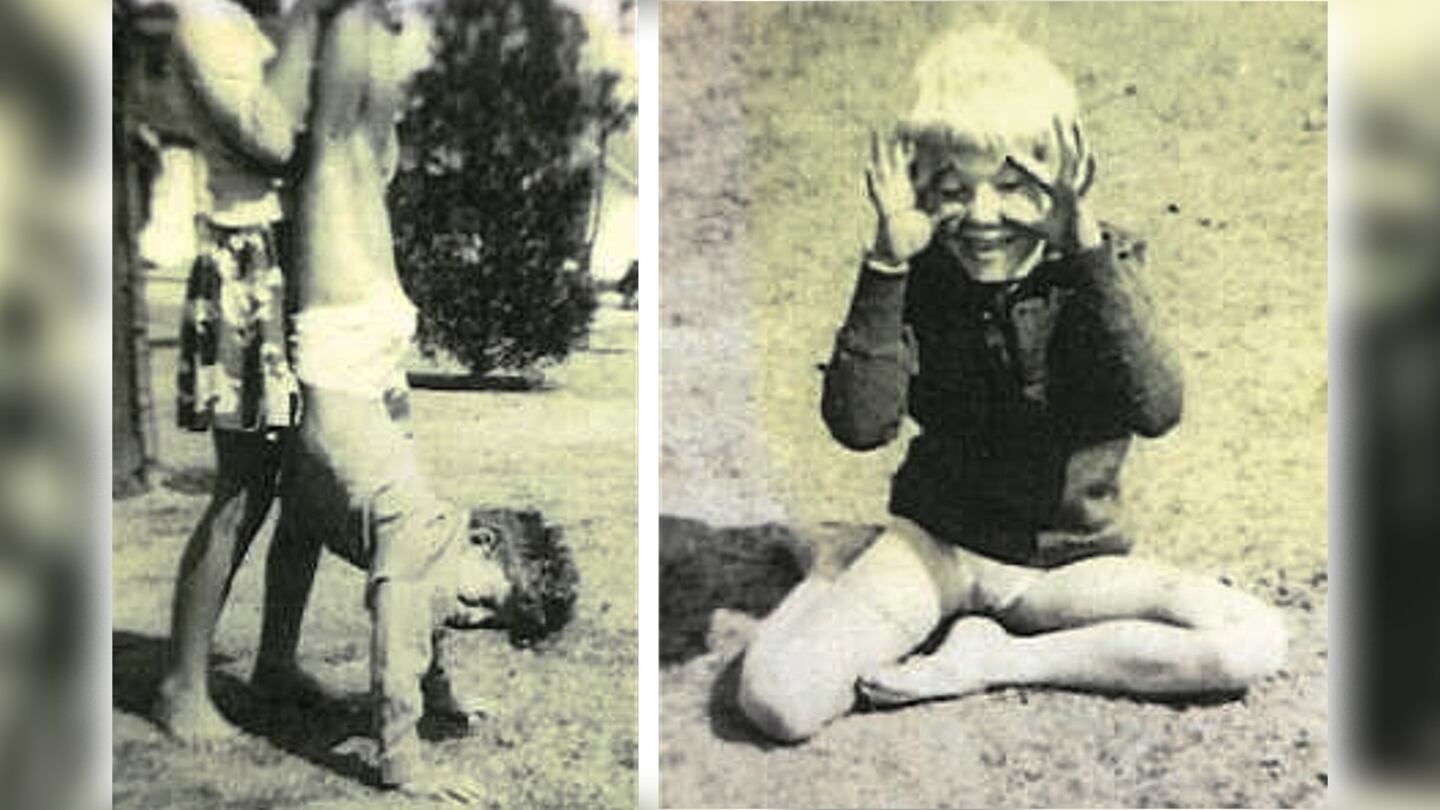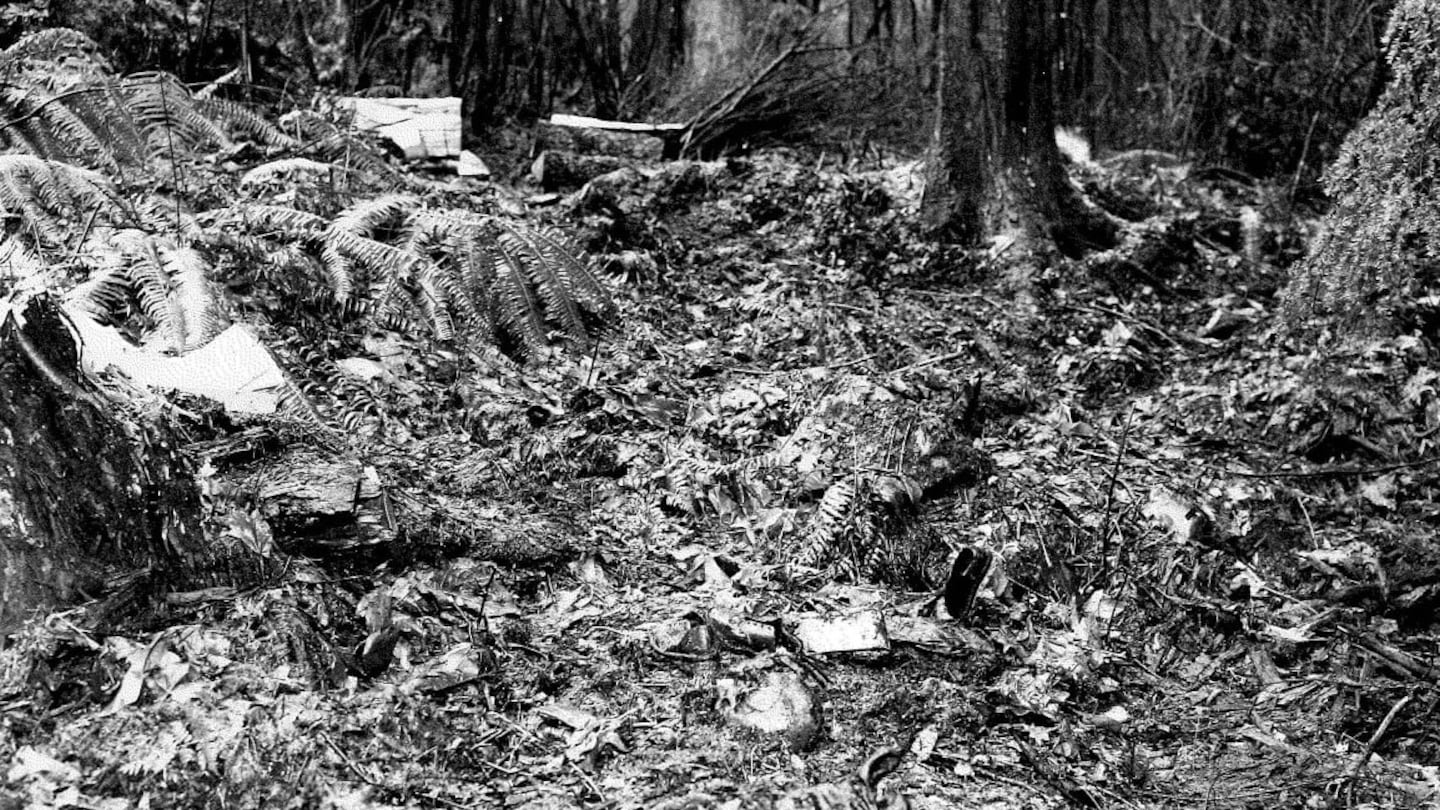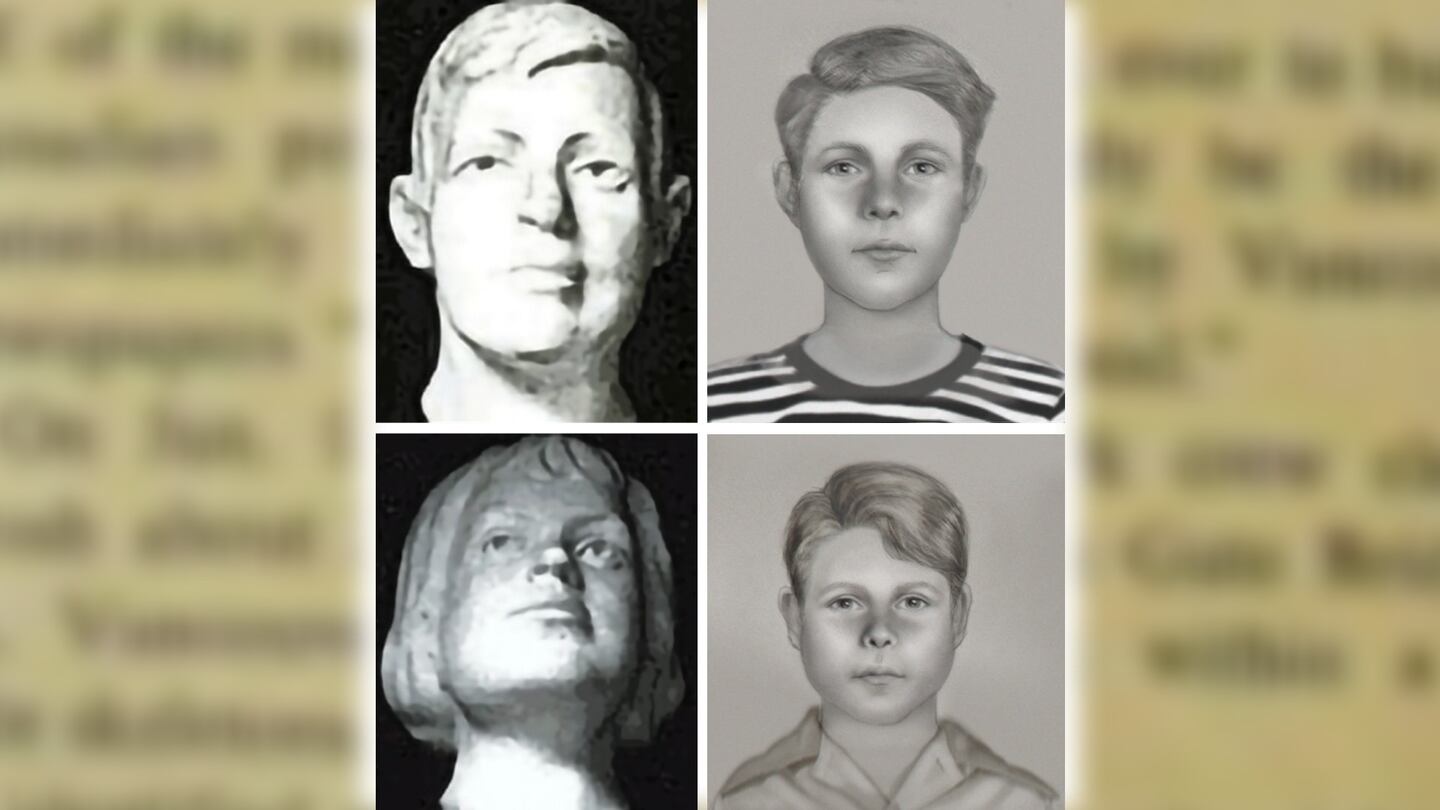VANCOUVER, British Columbia — A groundskeeper clearing brush from a Canadian park in 1953 made a horrific discovery: the skeletal remains of two young boys who had been bludgeoned to death with a hatchet.
For nearly 70 years, the boys, whose murders became known as the “Babes in the Wood” case, remained unidentified as their brutal deaths slowly became Vancouver’s oldest unsolved homicides.
The advent of genetic genealogy has changed that. Police officials last month announced that the new investigative method, which has exploded in popularity over the past several years, has provided cold case detectives with the boys’ identities.
Authorities believe they also now know who killed brothers Derek and David D’Alton, who are also known by the last name Bousquet. Derek was 7 at the estimated time of their death; David was 6.
“These murders have haunted generations of homicide investigators, and we are relieved to now give these children a name and to bring some closure to this horrific case,” said Inspector Dale Weidman, commanding officer of the Vancouver Police Department’s Major Crime Section. “Although significant folklore has surrounded this case for years, we must not forget that these were real children who died a tragic and heartbreaking death.”
The killer, according to police officials, is believed to be a close relative who died about 25 years ago. The relative’s name was not made public by police officials, but CBC News reported that authorities believe the children’s mother was likely their killer.
The Vancouver Sun and true crime author Eve Lazarus have identified the boys’ mother as Eileen Bousquet, who died in 1996 at the age of 78. Lazarus, who has also hosted a podcast about the case, detailed the search for the children’s identity on her blog last month, breaking the story the day before police announced the names of the slain children.
At the time the boys are believed to have been killed, a relative lived near the entrance to Stanley Park, where their bodies were dumped, police officials said.
“After seven decades as a cold case, we presumed that the person who killed Derek and David had likely passed away,” Weidman said in a statement. “But at this stage in the investigation, it was never about seeing someone charged for these crimes. It was always about giving these boys a name and finally telling their story. I’m proud to be part of the team that has done that.”
A heartbreaking discovery
The case began Jan. 14, 1953, with a groundskeeper at Stanley Park, an urban park located in the middle of downtown Vancouver. Police officials said that the man was clearing brush in a wooded area north of Beaver Lake when he stumbled upon the decomposed remains of the children.
The boys’ bones were found laid out in a straight line, their feet close together and their heads opposite one another. Their bodies had been covered with what appeared to be a woman’s rain cape, according to police and the Doe Network, a nonprofit organization that catalogs missing and unidentified persons.
The children had been lying undiscovered for around five years, with their date of death estimated to be in the autumn of 1947.
“They were covered by a women’s coat and concealed by thick brush that had grown around their bodies after death,” Vancouver police officials said.
Found with the bodies was the boys’ decomposed clothing, which included brown Oxford shoes and leather aviation helmets with goggles. One of the boys carried a blue tin lunch box that had rusted in the elements.
Investigators also found a small broken hatchet of the type used by shinglers and lathers.
“The hatchet found at the scene was most likely used as the murder weapon, as one victim’s skull had a wound to the back of the head which the hatchet fit in exact proportions,” states the Doe Network’s summary of the case. “The other skull was fractured by what may have been the hammer of the axe.”
Over the years, there were persons of interest that detectives tried to find, including a woman who was seen with two boys in 1949 or 1950. At least one of the children wore an aviator helmet similar to those found with the bodies.
All leads in the case were exhausted, however, and the case grew cold.
Listen to Eve Lazarus’ two-part podcast on the case below.
Technological leaps
In 1996, DNA was extracted from the children’s bones for the first time. It offered few clues to their names but confirmed that they were half siblings who had the same mother.
The genetic material also confirmed both children were boys. Authorities had initially believed one of the children was female.
The case remained unsolved as, each year, DNA technology improved by leaps and bounds.
“No homicide case is ever closed until it is solved, and for the past 70 years, VPD investigators have regularly revisited the cold case to review evidence and examine new leads,” police officials said. “In 2021, investigators obtained a DNA sample from each of the boys’ skulls and contracted Redgrave Research Forensic Services, a Massachusetts-based forensic genetic genealogist company.”
Watch authorities announce the boys’ identities below, courtesy of the Vancouver Sun.
According to Redgrave, the goal was to obtain autosomal DNA profiles for the boys. The International Society of Genetic Genealogy explains that autosomal DNA can be used to confirm relationships up to the level of second cousins.
Due to the age of the boys’ bone samples, as well as the fact that they’d been handled by numerous people over the years, it took a couple of tries to obtain DNA from the remains.
Redgrave, working with Lakehead University in Ontario, HudsonAlpha Institute for Biotechnology in Huntsville, Alabama, and bioinformatician Kevin Lord of Saber Investigations in Belton, Texas, was able to successfully sequence the DNA of the older child, now known to be Derek. That gave them a DNA profile sufficient enough to upload into GEDmatch.
GEDmatch is a public genealogy database in which users upload their DNA data in an effort to find people they are related to, from siblings and parents to distant relatives. Unbeknownst to investigators, the slain boys’ great-niece had purchased a DNA kit through 23andMe and uploaded her profile.
In January, after learning of the successful sequencing, the genealogists at Redgrave began building family trees of potential cousins of the boys.
“The genealogy team worked tirelessly to arrive at the right family group,” Redgrave officials said in a news release. “(They) reported to Vancouver Police Department with the name of a possible mother for the children on Jan. 31, 2022, and the names of living family members for investigators to contact for confirmatory testing, as no immediate relatives were in the GEDmatch database.”
Vancouver police officials said after Redgrave’s team identified the boys’ maternal grandmother, they knew they were on the right trail.
“We knew there were good odds of finding a living family member out there somewhere,” said Detective Constable Aida Rodriguez, VPD’s lead investigator. “But, once we discovered that DNA match, we still had a significant amount of work to do to locate family members, check school records and confirm specific details about the victims so we could be absolutely certain about their identities.”
>> Read more true crime stories
Last month, cold case detectives met with a distant relative of the children living in a Vancouver suburb. Lazarus, who spoke with the woman, identified her as Derek and David’s great-niece, Ally Brady.
Through Brady, police learned details of who the boys were.
Derek and David D’Alton were the descendants of Russian immigrants who traveled to Canada at the turn of the 20th century, police officials said. According to Brady and Lazarus, the boys’ mother was of Métis heritage. The Métis people are one of Canada’s Aboriginal tribes, its people of mixed European and Indigenous ancestry.
Derek and David, along with their older sister Diane, lived in poverty and attended Henry Hudson Elementary School in Kitsilano before the boys’ deaths. Brady told Lazarus she has always been told that the boys were taken from their mother by social services.
“I remember my mother sharing stories with me about her mother’s poverty, and how they used to jump out of windows at places they were renting in Vancouver to avoid having to pay because they were just so poor,” Brady said.
The boys were never reported missing, and police have been unable to find any record of them being taken away by social workers.
Authorities said the family apparently changed their last name to Bousquet, Eileen Bousquet’s maiden name, in the 1950s, sometime after the boys were slain.
“The story that had been handed down to them was that the boys had been removed from the residence by the ministry,” Rodriguez said. “Even though this family member did their best to talk about the boys and try to get the story, the only response they got from family was silence.
“The absence of the boys was never discussed.”
Brady said whenever she or her mother asked Brady’s grandmother, Diane, about the missing boys, Diane would change the subject.
“We don’t talk about that,” or “that’s in the past,” she would say, according to Lazarus.
Brady’s mother, Cindy, does not believe that her grandmother killed her two little boys, according to the author’s blog post on the case.
“She says her grandmother was a lovely, gentle woman,” Lazarus wrote before adding a quote from Cindy. “‘She was a huge animal lover, she babysat little kids. She was very sad because something had happened, and I don’t know what it was because nobody wanted to talk about it.’”
Brady continues to research her family’s history and is trying to determine who the boys’ fathers were.
The Redgrave team thanked all the investigators, lab personnel and genealogists who helped solve the case.
“Our thoughts are with the family as they process this news,” the company said in a statement.
©2022 Cox Media Group









